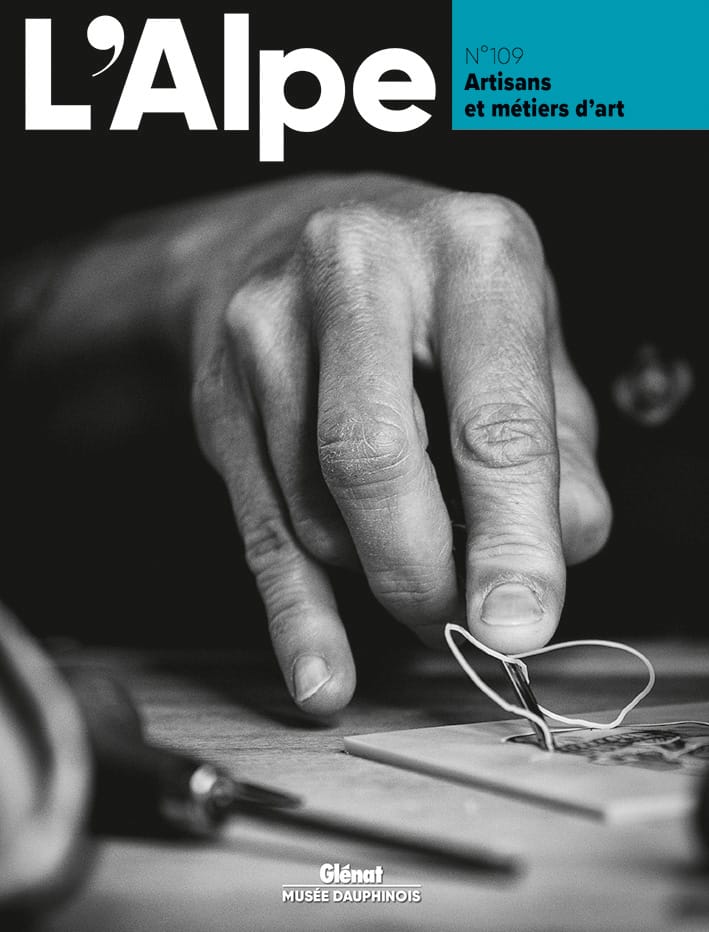Translations : Cary Bartsch
Written for people looking for information with meaning, L’Alpe is the first review devoted to the many cultures and heritages of Alpine Europe. Its ambition is to provide information, language barriers not withstanding. As your guide, L’Alpe looks at the people who, from the meandering Danube to the Rhône, have adapted to an exceptional climate. A cross between a book and a magazine, it draws on the first to provide background documents on a main theme, supported by rigorous analysis, an insistence on quality and the notoriety of renown authors. From the second, it adopts a quarterly rhythm for regular contributions to current debates, rich illustrations, the insatiable curiosity of its journalists and a necessarily didactic approach. Though rigorous in its approach to knowledge, L’Alpe is not a scientific journal. It calls on the contributions of history, geography, archaeology, ethnology, etc. to shed light on the meaning of the traces left by man on the mountain environment. And it is also open to current debates on the future of the Alps and other mountains in the world.
Wood and stone in my image
« The home is the most obvious and personal of ethnic traits » , says Leroi-Gourhan, ethnologist. It is in fact considered one of the last markers of regional identity, even to the point of excess when that identity becomes a bit less clear.
Mountain life
The originality and diversity of Alpine buildings is the product of a mysterious mixture, three drops of culture, a touch of nature and a dash of common sense, all wrapped up with a bit of imagination and artistry… Rural architecture presents, from one end of the Alps to the other, a fabulous palette of shapes, techniques and materials.
The roofs
of the roof (of Europe)
Alpine roofs offer a wide array of colours, materials and angles that contribute to the harmony of landscapes in inhabited mountain areas. These discreet elements, designed and built with pride by generations of craftsmen, are slowly disappearing. A call for recognition of an abandoned heritage.
Shepherds in caves
Caves sheltered shepherds and their activities on the southern faces of the central Alps. Hundreds of barns, stables, storage areas and other temporary lodging, very rustic but highly practical, bear witness to clever adaptation to the environment. A most original form of Alpine architecture.
(Ex)changing styles
Travelling masons, the men from the small valley of the Lys, a part of the Aoste valley, set off each year to build in other parts of the Alps. In doing so, they exported the architectural styles of their own villages to regions as far away as the Savoy and the Valais. Their buildings, from a far off land, now integrated in the local traditions, remind us of the long European tradition of exchanging techniques and know-how.
How much wood would a…
Two hundred trees for a single house! An impressive figure, produced by a recent study on a traditional home, three centuries old, is a small Valdotain valley. At that time, such « raccard » homes were built by the dozens and the forest seemed limitless.
The warmth of the hearth
A round porcelain stove heats the cozy, wood-panelled living room. The Stube is the German version of the « warm room » in mountain homes. The centre of family and social life, this finely decorated, welcoming room is a centuries-old tradition from medieval times.
The photographer
and the ethnologist
Roberto Neumiller has for years travelled the Alps to photograph the inhabitants. The intriguing comparison between his photos and those taken a century earlier and drawn from the archives of the Musée dauphinois in Grenoble reveal troubling parallels.
From grange to mazot –
a metamorphosis
These tiny buildings, modular and removable, formerly contained reserves for the winter months, the family’s precious possessions and… high symbolic value. Today, transformed and now called « mazots », these wooden granges contribute to the myth of an ideal mountain culture.
Enough of stereotypes
« Old-style » chalets and geraniums have invaded the Alps. A windfall for builders always ready to please. But in the process of returning to « tradition », the neo-rustic imitations are stifling contemporary architectural design. A protest.
Solids and shapes
Worn by time, repainted and repaired a thousand times, decorated solely by their rustic iron or wooden fixtures and latches, doors and shutters are true works of art for those with an eye. Observe the many discoveries of Catherine Stahly-Mougin in Volvent, a small village with twenty inhabitants, located at an altitude of 850 metres in the southern French Alps (Drôme).
Contraband between
Rhône and Guiers
The Musée dauphinois in Grenoble has devoted a major exhibition to Louis Mandrin, who was also active in the flourishing contraband business in the middle of the 1700s. This is attested by a recent, in-depth study of the archives of the Savoy senate.
The explorer
of the maritime Alps
At the end of the 1800s, Victor de Cessole, a nobleman, scientist and alpinist, discovered the tortured landscapes of the upper Var valley. For over forty years, he walked, mapped and photographed the mountainous hinterland of Nice. And in the process, he succeeded a number of significant climbs, including the Aiguilles de Pelens .
Rickety rocks
on the Mont Pourri
One hundred years ago, on 16 August 1905, four men made it to the top of the Grande Aiguille de Pelens , after a number of delicate manoeuvres on the extremely unstable rock. A victory for Victor de Cessole and his guides on what is considered to this day a most dangerous mountain.
Tell us about yourself,
tell us about us
The results of the poll carried out among our readers, in issue 26 last winter.


